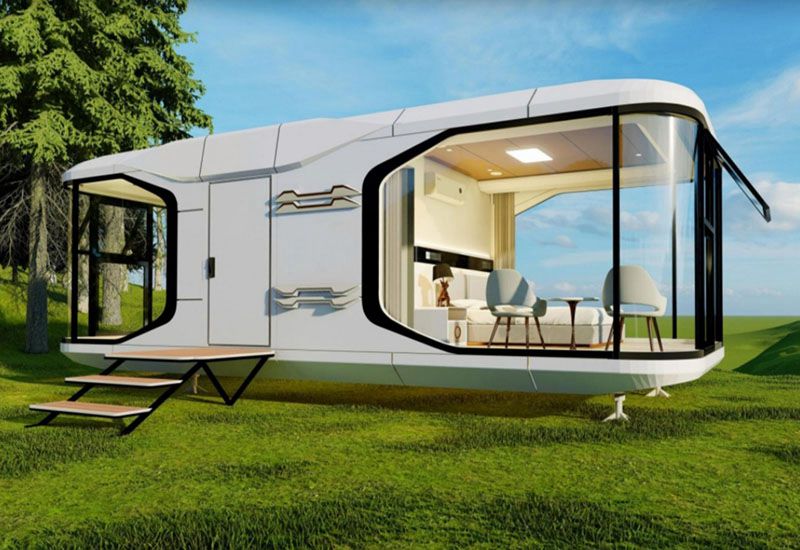The trend around the need to shift towards sustainability and functionality is taking off in businesses and societies alike. pod homes present themselves as a strong disruptor within the transformation of modern housing. These small self-contained units are a great mixture of aesthetic and ecological sensibilities and are ideal for both developers and environmentally conscious customers. This article will be demonstrating especially how pod homes can add to more sustainability to modern housing as well as improve the architecture of tomorrow.

Space Saving and Consolidated Style
One of the most glaring and pronounced characteristics of pod homes is the minimization in the amount of space taken up. Since these types of homes are designed with space constraints, the dwellings use clever designs to make the most out of the available space as required and easily done so without any extra square footage. With a lesser size, the negative impact on the environment is also reduced since there will be less material consumption as well as land area, making it appropriate for urban as well as rural places. Also, it further reduces the carbon footprint of the pod homes since the level of thermal conditioning required for these compact homes is minimised thereby reducing overall C02 emissions in the long run.
Environmentally Conscious Building Materials
The majority of pod homes are assembled using sturdy and sustainable materials which include recycled steel, nature friendly insulation and wood that is harvested in a sustainable manner. Not only do these materials ensure that the greenhouse gases emissions while constructing, but they also possess suitable properties that enable long-term use of the materials. Most of the manufacturers of the pod homes also make use of low-VOC finishes and non-toxic adhesives, which improves the indoor air quality and enhances the environmental sustainability.
Modular and Off-Grid Capabilities
All the members of the pod home family have been designed to be modular which means that they can be used for different purposes and placed in different environments. They can also be fabricated off-site to reduced construction waste and transport costs as they only have to be assembled on site. Other than that, many of pod homes go offers off-grid options, where solar panels, rainwater harvesting systems and composting toilets are among the more popular features. The systems give residents a great alternative of self-sufficient living thereby reducing the need for conventional utilities and natural resources.
Economical and Fast To Construct
With the following features streamlined design and modular construction, pod home has a much lower overall cost when compared to traditional housing. Due to that pre-fabricated nature, such homes can be constructed quite fast allowing developers to commercialize projects in no time. This level of cost and further the time frames make such homes a perfect option when looking for affordable housing alternatives, disaster relief situations and temporary housing centers.
Evolution on the Promises of Eco-friendly Domiciles
Pods are designed to shift the housing dynamics to eco-friendly solutions, particularly in urban areas that suffer from overcrowding and the degradation of natural resources. In combination with the growing popularity of such homes, society’s increasing aspirations to preserve the environment will contribute to their focus on pursuing eco-friendly solutions. As more societies seek ways to not only repel the environmental impacts of their domociles, but eliminate them, these homes are sure to define the future of housing.
Conclusion
Eschewing conventional building techniques and materials, pod homes are the future of housing. As urbanization predictably grows, so will the core attributes of these homes. Combining minimalism, efficiency and advanced off-the grid technology will allow pod homes to appeal to the environmentally aware buyer. Looking ahead, pod homes will actively engage in the mission of building an eco-friendly future, while redefining the mechanisms of how society tackles the contemporary housing crisis.